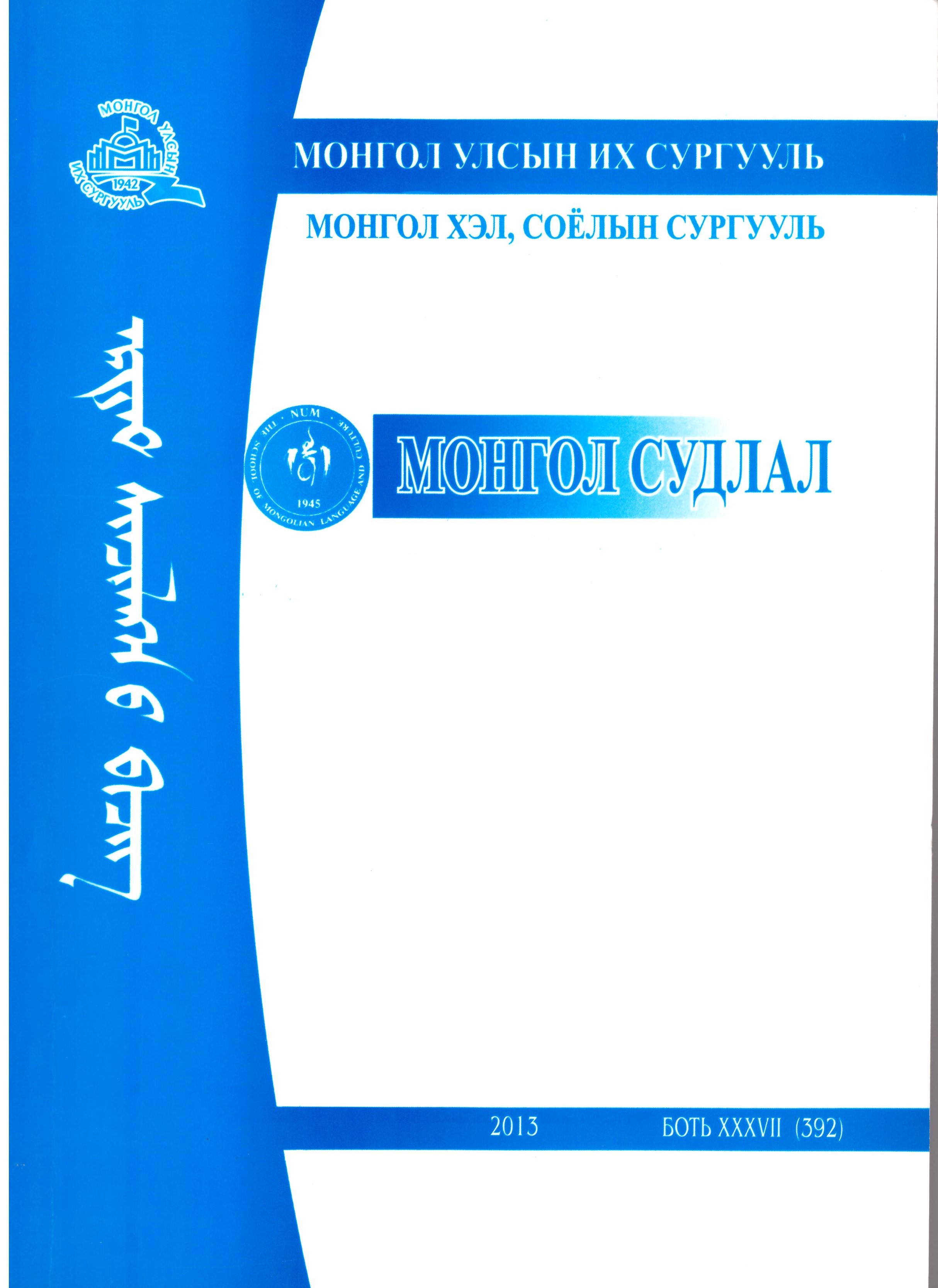Монгол хэлний төлөөлөн нэрлэх ёсны өвөрмөц онцлог
Peculiarities of Synecdoche of the Mongolian Language
Abstract
Synecdoche is a figure of speech in which a term for a part of something is used to refer to the whole of something. In my presentation I examine Mongolian ways of using synecdoche in relation to four kinds of subjects.
1. Referring to human beings by a term originally used for a part of the human body, such as hun(philtrum), am(mouth), gar(arm), xol(leg).
2. Referring to animals by the name of a part of their body, such as eruu(jaw). *(idsen eruu-animal).
3. Referring to plants by animal names, such as hurganii chih (lamb-ear), nohoin hoshuu(dog-snout).
4. Referring to whole things by names of their part, such as dugui(wheel), for bicycle, hana(wall) but dorwon hanat(four walled) means a four-walled yurt etc.





